Distance – 470km of mostly Pyrenees mountain roads with 11 great Cols
Cols/Passes – Col de Portel (1,432m), Col de la Crouzette (1,246m), Col de Péguère (1,375 m), Col de Port (1,249m), Port de Lers (1,517m), Col d’Agnès (1,570m), Col de la Core (1,396m), Col de Portet (1,069m), Col de Menté (1,349m), Port de la Bonaigua (2,072m), Port del Cantó (1,725 m)
Download This Route »
Note: You will be asked to log in or register with RoadTrooper.com to gain access to downloadable .KML (Google Earth), .GDB (Garmin), .GPX (Generic) files.
Starting in the ancient fortified town of Carcassonne, this route will bring you through Foix, the centre of Cathar country and on towards the Pyrenees, entering Spain at Fos and the stunning Pòrt/Col de la Bonaigua (2072m) before cutting through Porte/Col de Canto 1725m and entering Andorra from the Spanish side.
This can be done in one, but better two days. Make sure the high passes are open or be careful of road conditions in spring/autumn due to ice/snow. As in the Alps, or any high mountain region weather conditions can turn dangerous very quickly so be prepared with warm/waterproof clothes. The French side is easy riding to Foix , but from here you hit roads reminiscent of Route des Grande Alps, narrow roads and tight bastard hairy hairpins through the Cols. Speaking of hairy you should think twice about taking a crap in the woods around here, these woods are the home of Slovenian bears released here in 1996 to boost the local bear population.
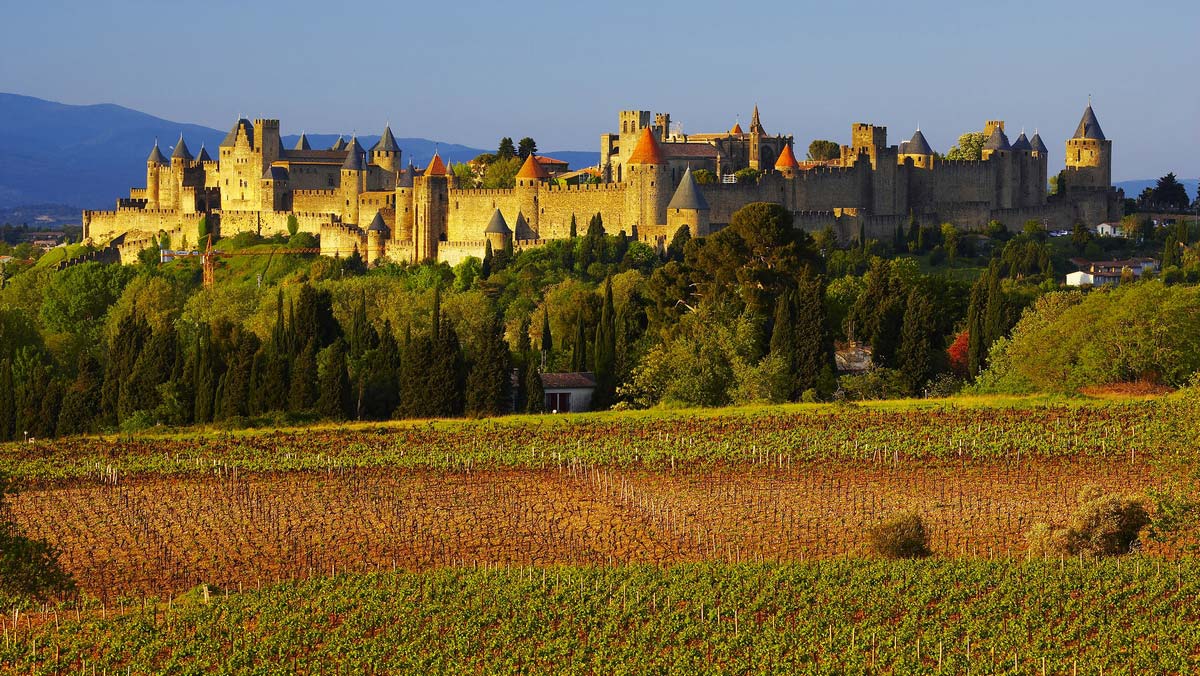
Fortifications at Carcassonne
Carcassonne is a wonderfully historical city, truly one of a kind and not to be missed! Built in the 13th century, restored in 1853, it is the largest walled fortress town in Europe and looks amazing lit up at night, if you haven’t been you will love this place. There is good campsite with views of the old city on the south side of town – Campéole La Cité and its only a 15 minute walk into town from the site.
More info on Carcassonne here »

D118 south of Limoux
The next town on the route worth a stop is Foix with it’s castle dating from 987AD and played a major role in the Cathar crusades. Foix is not well-known, but it is stunning none-the-less and swamped in history. Fought over for years by the French, English and Spanish due to being a border town. It was also an important waypoint on “le chemin de la liberte – path of liberty” for American/British pilots, Jews and refugees escaping to Spain during WWII.

Chateau de Foix
From Foix you enter roads less travelled and the road trip begins to feel more like an exploration adventure, although this route is well-known by our peddle pushing brethren as these roads are often part of the Tour de France. This is not a bad thing as a fair number of auberge’s, refuges, campsites and small hotel’s have popped up to cater for them and are more than happy to welcome us lot.
It’s probably good to explain a bit about the languages of the area so as to save confusion when reading this as area signposts and maps of the Pyrenees use the words “Col”, “Port” “Porte” and “era”, e.g. Col de Port, era Val d’Aran and Port de Lers. Col is French for mountain pass as is Port/Porte in the Occitan language. Occitan since Roman times has been an unofficial spoken language in the regions of Southern France, Catalonia, Monaco, and North West Italy. In France it’s known as Provençal, in Val d’Aran it’s an official language and known as Aranese, and is a close relative of Catalan. It’s good to know this as almost 40% of the region speak Occitan and if you expect to just hear Spanish Catalan or French you’d be in for confusing surprise as it’s evident in road sign’s and depending on where your map is printed it may not exactly correspond. Also, depending on your map the place names can be very different. For example, I have 3 maps of the region, 1 Spanish, 1 French and another English in which the place names vary greatly between the French name, the Spanish Catalan name, the Aranase name and the Basque names! Your GPS will most likely use the French name so I’d advise to buy a local map when you get there if things get confusing or your GPS looses it’s signal in deep valley’s.
Also good to be aware that the Basque language (north-western Spain, south-western France , which is utterly unrelated to any modern language is spoken in the western Pyrenees, again this can cause confusion relating map place names to road signs in the area. Like Finnish, Basque, known as “Euskara Batua” is completely incomprehensible and unrelated to any other western European language but not to worry, you’ll be fine. I’ve been in so many countries I’ve found that if you don’t speak the lingo just try to look harmless, put a pleasantly ignorant or imbecilic expression on your face and speak English, if the locals want your much-needed money they will speak whatever you want! Unfortunately this attitude rarely works on the local cops, they’re the same everywhere, best to give them a wide berth.
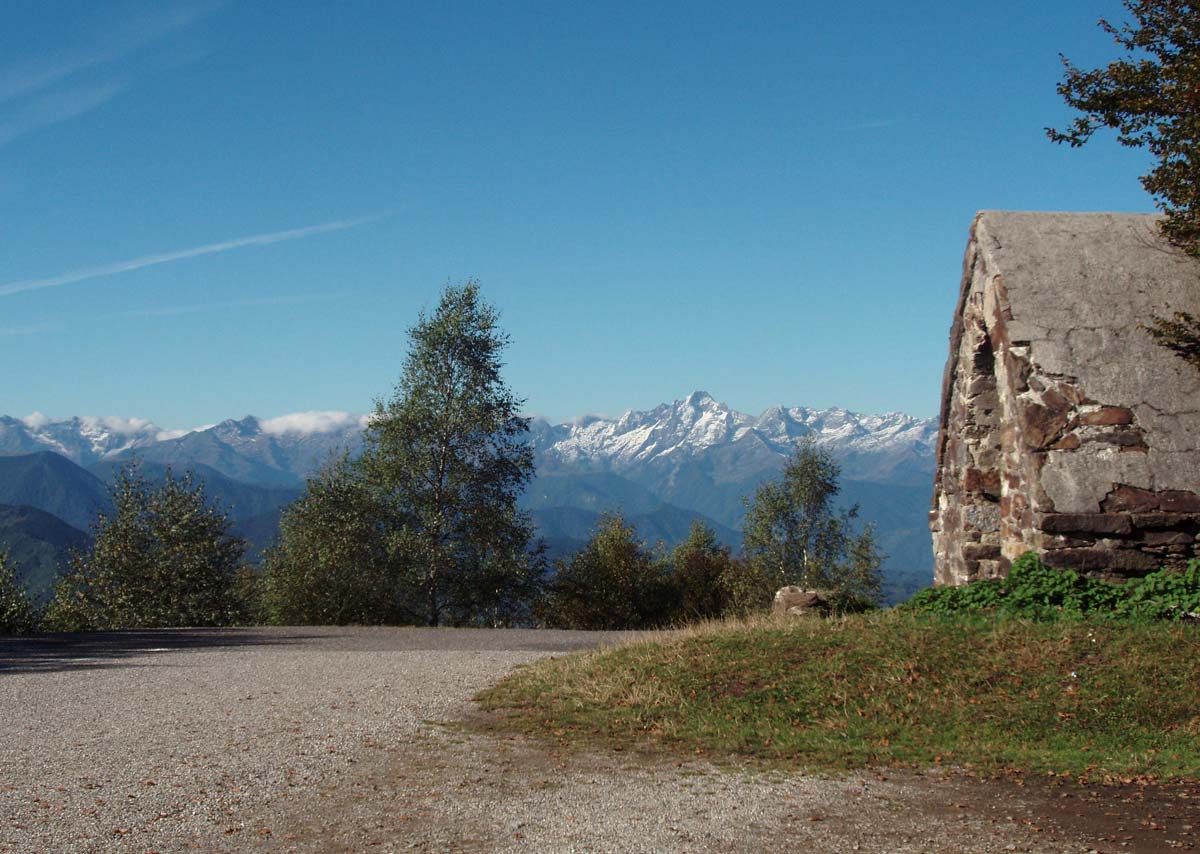
Col de Péguère - 1375m
Now for the good stuff, from Foix the D17 leads to Col de Péguère (1,375 m), at the junction of D17 and D72 you have the option of going straight to Col Port or taking the D72 and adding Col de Portel (1,432 m.) and Col de la Crouzette (1,246m) to your route, a worthy detour but will add an hour to your trip as the road is small and slow going.
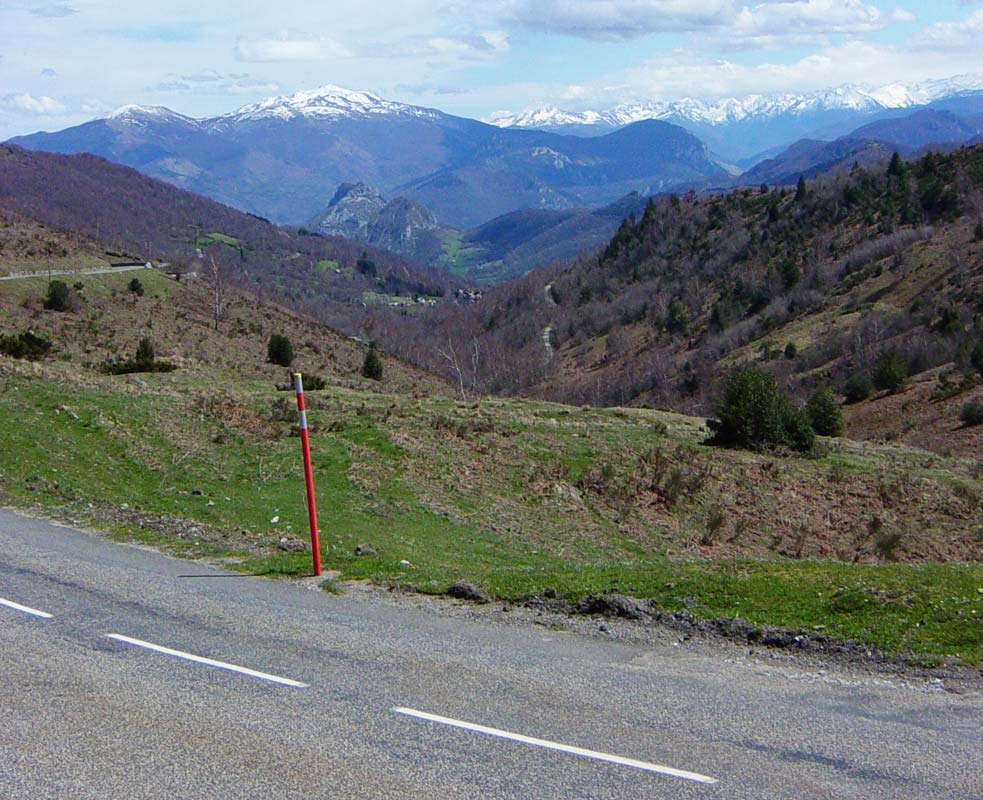
Col de Port (1,249m)
Col de Port is a beautiful 30km run, it’s a steep climb with plenty of sweepers and hairpins with good road surface but can have patches of gravel/stones from rain water run off. If you’ve done Route Grande Alps you’ll know what to expect with this, however the Pyrenees region has much more wildlife than the Alps, watch out for cows, horses and deer on the roads. If your really lucky you might spot bear’s or wolves. There are also eagles which are frighteningly big seen up close up, when you see them you’ll know what I mean!
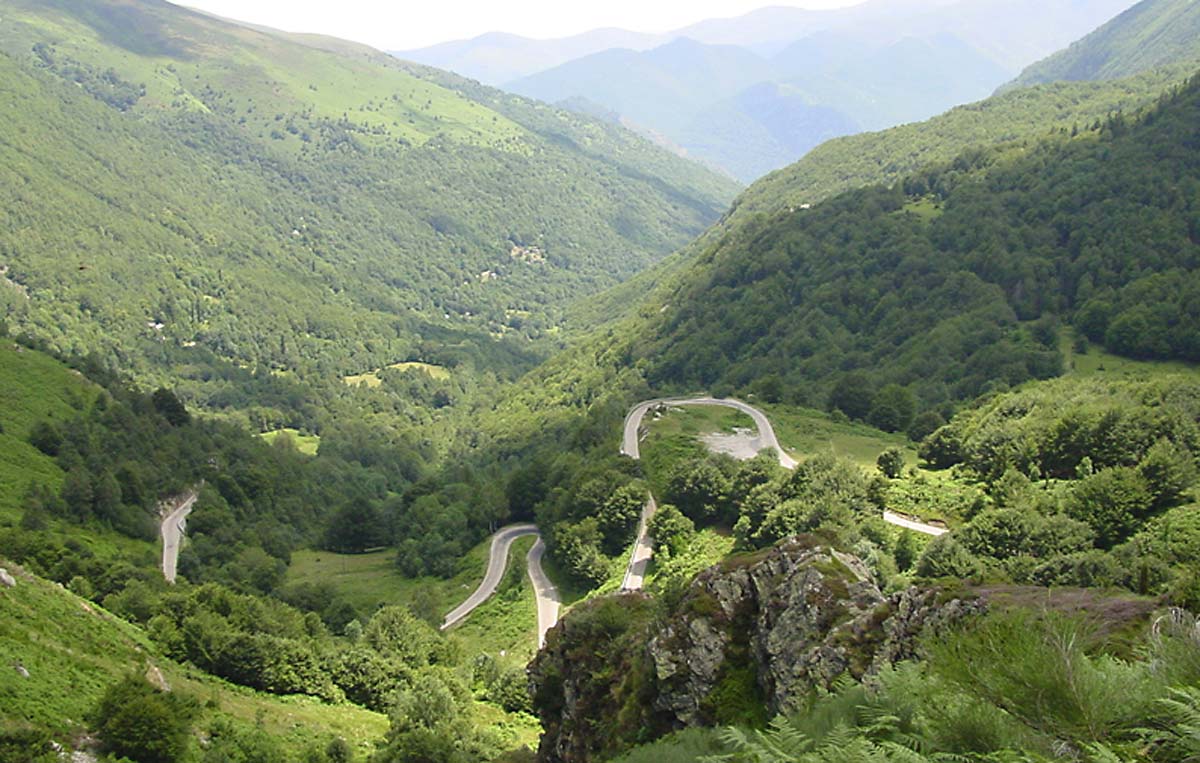
Port de Lers (1,517m)
From Tarascon sur Ariège join the D8 on to D18 and Port de Lers 1517m and Col d’Agnes (1570m). Another road on Tour de France this road is a real stunner and a must for any biker with alpinitus, with its jaw dropping views this is a great road that switch-backs down to the pretty village of Aulus Les Bains.
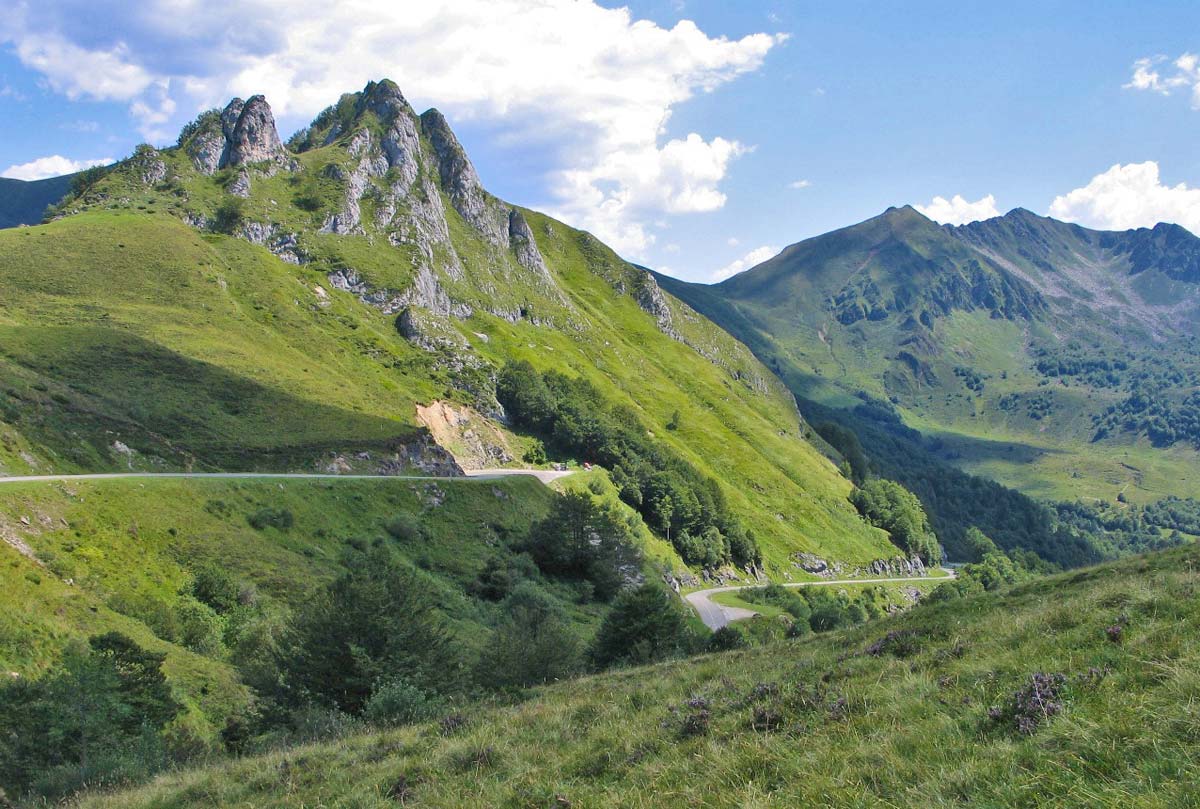
Col d’Agnes (1570m)
From Aulus the route runs along a valley to Seix, surrounded by mountains, many of which are extinct volcanoes with the classic conical volcano shape.

Col de la Core (1,396m)
From Seix it’s a good run up Col de la Core (1,396m), again a narrow road but the surface is good and the whole area here is heavily forested, but unlike the Alps is mostly deciduous forest, different but just as beautiful. Watch out for cyclists belting down the Col towards you at speeds that would impress an R1!

Col de Menté (1,349m)
Next up is Col de Portet d’Aspet and Col de Menté, the route to here runs through a number of quaint villages offering good stop-overs for lunch or a place to down a bottle of wine, fromage de chevre and a good night’s sleep. The assent from Aspet to the col is a steep hairpin head banger of a road that killed Fabio Casartelli in the 1995 Tour de France, there’s a monument to him at the top which reminds us this road demands a bit of respect or it will bite your ass!
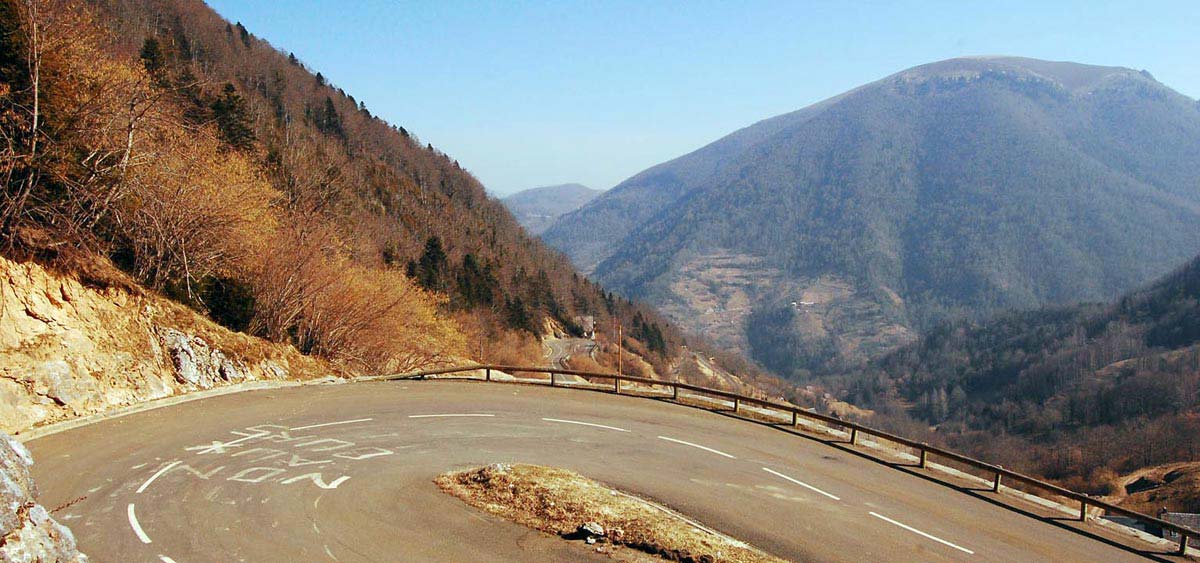
Col de Menté (1,349m)
At Pont de l’Oule, the climb begins for Col de Menté, a beautiful hairpin filled stretch with a good surface allowing you to navigate and enjoy the turns fairly easily, again the views here from the D618 to the town of La Garonne à Saint Béat are ridiculously beautiful.
There is a well recommended, English-speaking and biker friendly B&B just outside Saint Beat, Chalet le Chapeau Bleu and a good place to relax for a night before crossing into Spain and Andorra.

Valle d'Aran from the C-28
Just a bit south of Saint Béat you enter Spain at the small border village of Fos, the route then climbs up Val d’Aran and constitutes the only part of Spain, and of Catalonia, on the north face of the Pyrenees. You will see road signs using “era” in front of place names, e.g. “era Val d’Aran”, well your now in Catalonia dude, the language is now Aranese, Occitan, Catalan, French, Spanish or Provencal! Feck-Arse, I need a stiff drink to figure that out!
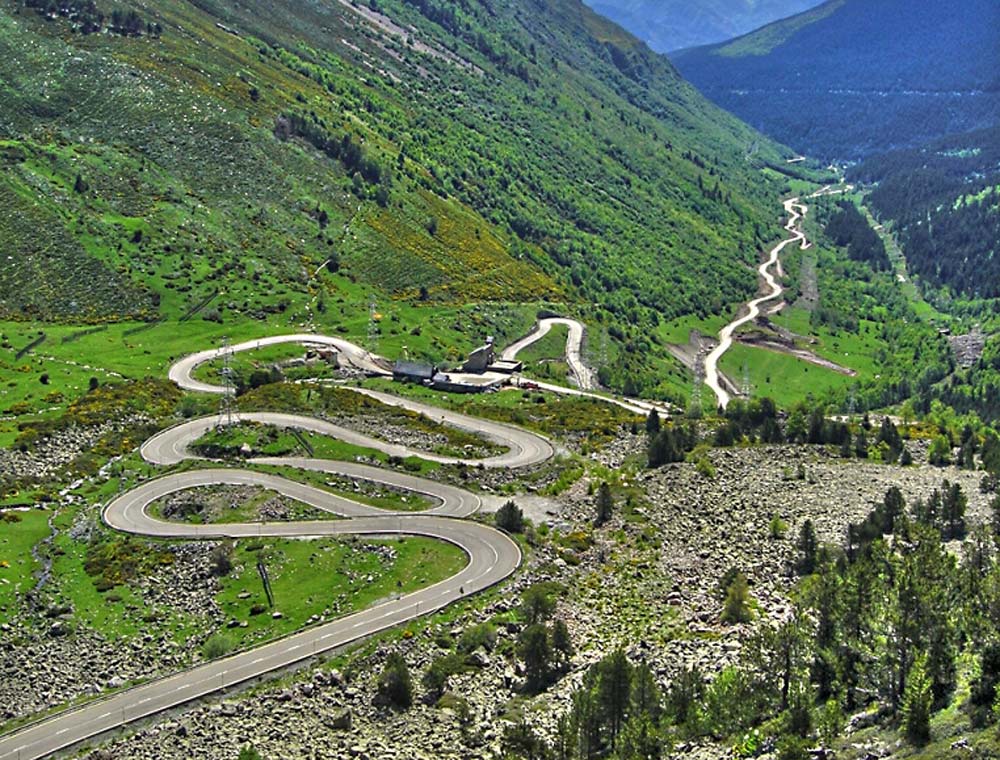
Port de Bonaigua (2072m)
The road N-220 through Val d’Aran has a well maintained smooth surface and a joy to ride due to the popular ski stations and national park further up the pass. This leads to Port de la Bonaigua, at 2072m it’s one of the highest, the highest being El Pas de la Casa at 2408 on the Andorran/French border, which I’ll get to in a later post.
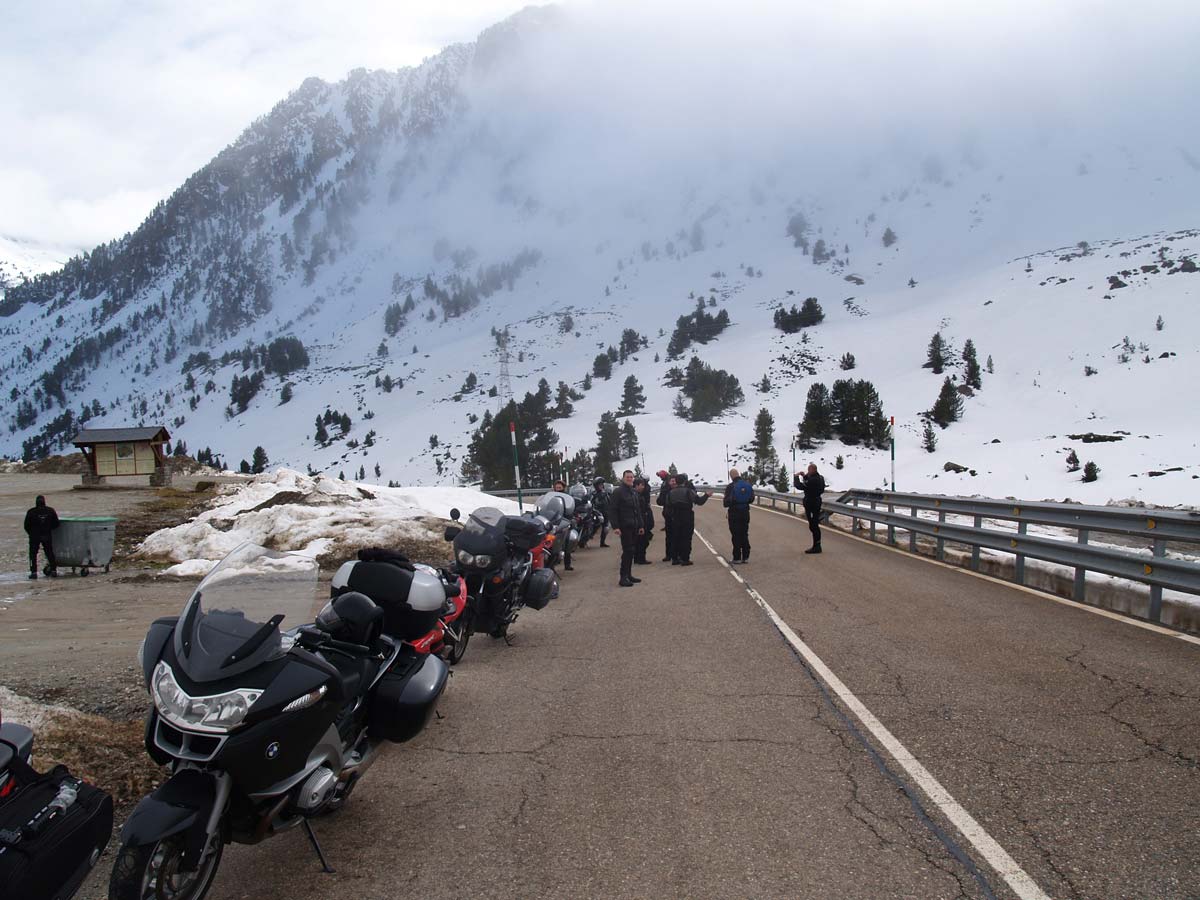
Port de la Bonaigua (2072m)
The Bonaigua pass is without doubt an Alpine contender and definitely one to put on your list.
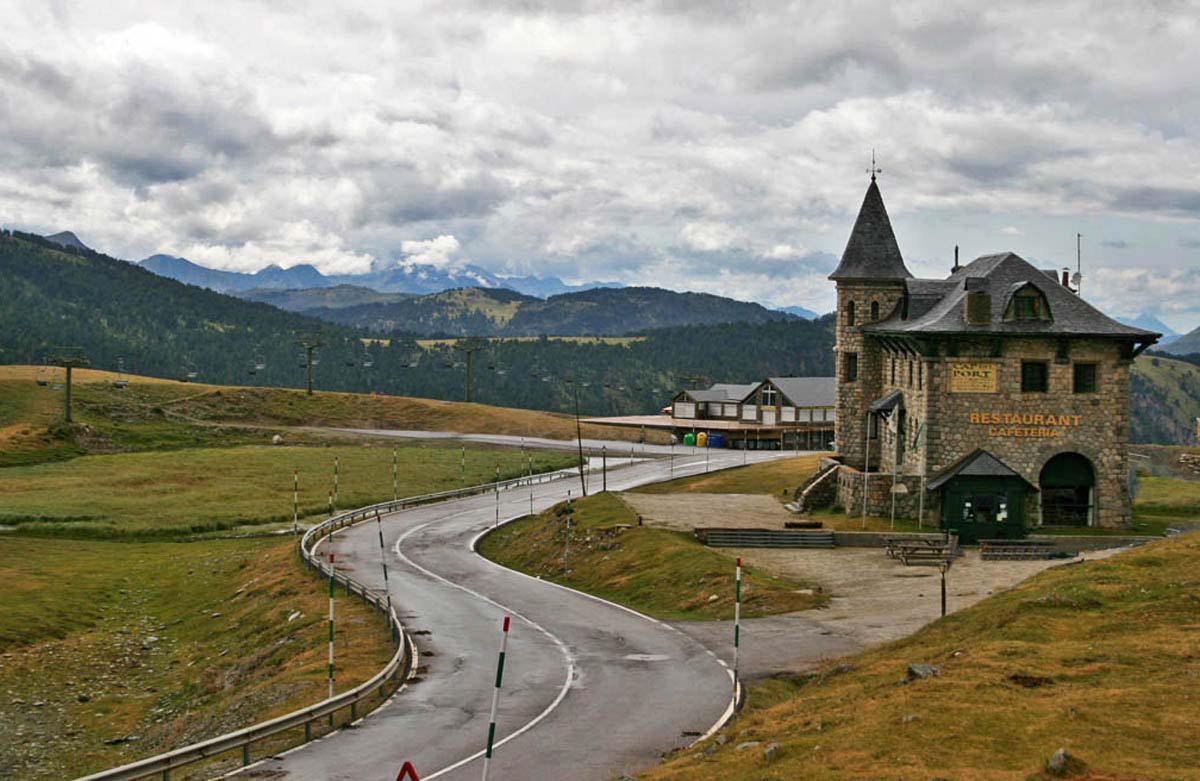
Port de la Bonaigua restaurant
This is a great route all the way to the Andorran border taking in Port del Cantó (1,725 m) on the way but near Andora the increasing traffic kinda breaks the mood a bit. Andorra la Vella is not one of my favorite stop overs, it’s a busy modern town that doesn’t really fire up my adventurest spirit, however it does have some redeeming features. Firstly the whole town is duty-free and a good place to pick up a bargain, if it’s too big to pack on the bike all the shops I’ve been to offer postage.
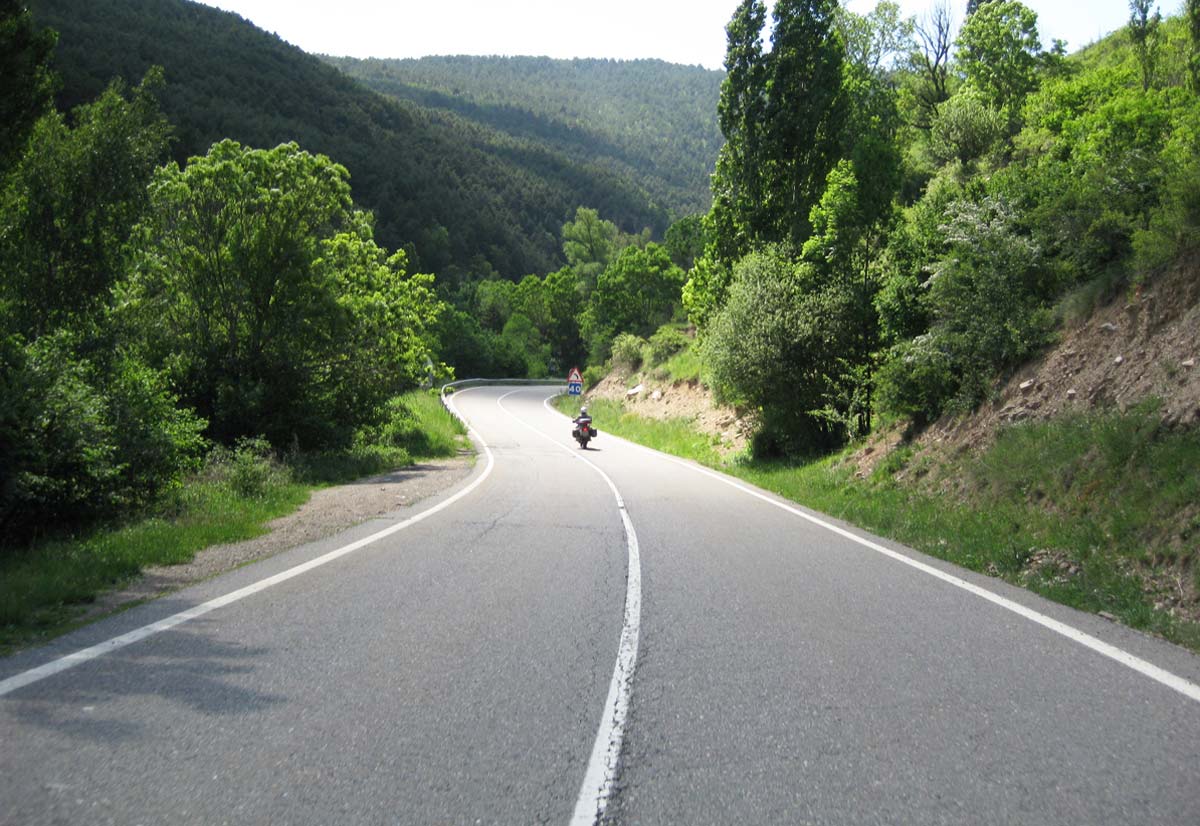
C-28 Port de Canto 1725m
Andorra Bike Shop
More info & location of Andorra Bike Shop »
It’s also got some really good motorbike shops well worth a sniff around, don’t forget to bring your passport to avail of the duty-free prices. Check out the website for shop locations, their online store prices are not bad either.
More info on Andorra la Vella Health Spa »
It’s also got a world-class health spa, this place is the dogs bollox, outside of a wild night on top of Jessica Alba I would find it hard to think of a better way to rub off the road stress and knotted shoulders gained from riding an over weight 1150RT up here. A massive, glass roofed swimming pool leading to outside jecussi’s with views of the mountains all round is pure magic. Ice pools, sauna’s and massage rooms (straight up massages, sorry) can really set you up for another 1000km ride, it’s fun for all the family, until that is, a bunch of unshaven, tattooed bikers make their way in to lower the tone of this civilised oasis…
Route Instructions
Pyrenees Pass Conditions »
Bison Fute – Traffic/Road Info »
Campsites in the region
Remember, if you start getting tired of riding by 3pm you can just pull into the nearest tourist office by 4pm and they will find you a place to stay. I have always found the French tourists offices excellent, almost every fair-sized town or village has one. In really small villages I’ve even found a place to sleep (Auberge/Refuge/B&B) by asking in the local shop or post office. Unfortunately this is not the case on the Spanish side where it can be a bit harder, so if not going to make Andorra I’d recommend staying French side.
Static Map (Click to view)
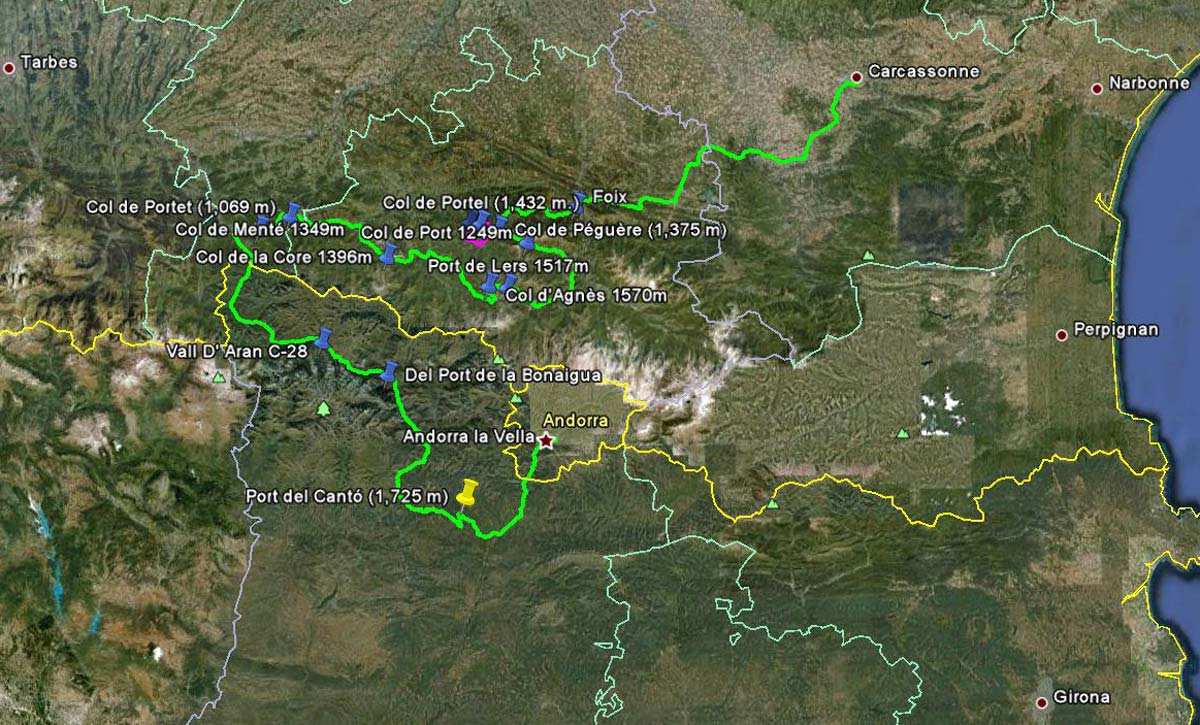
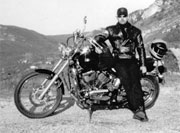







was in Andorra just last monday but did not get to see the scenery you did , some beautfyul pics
pg